Want to serve cabbage to your baby? Use these tips for safely serving cabbage using a baby led weaning approach, including how to cut cabbage for babies, cooking methods and serving tips!
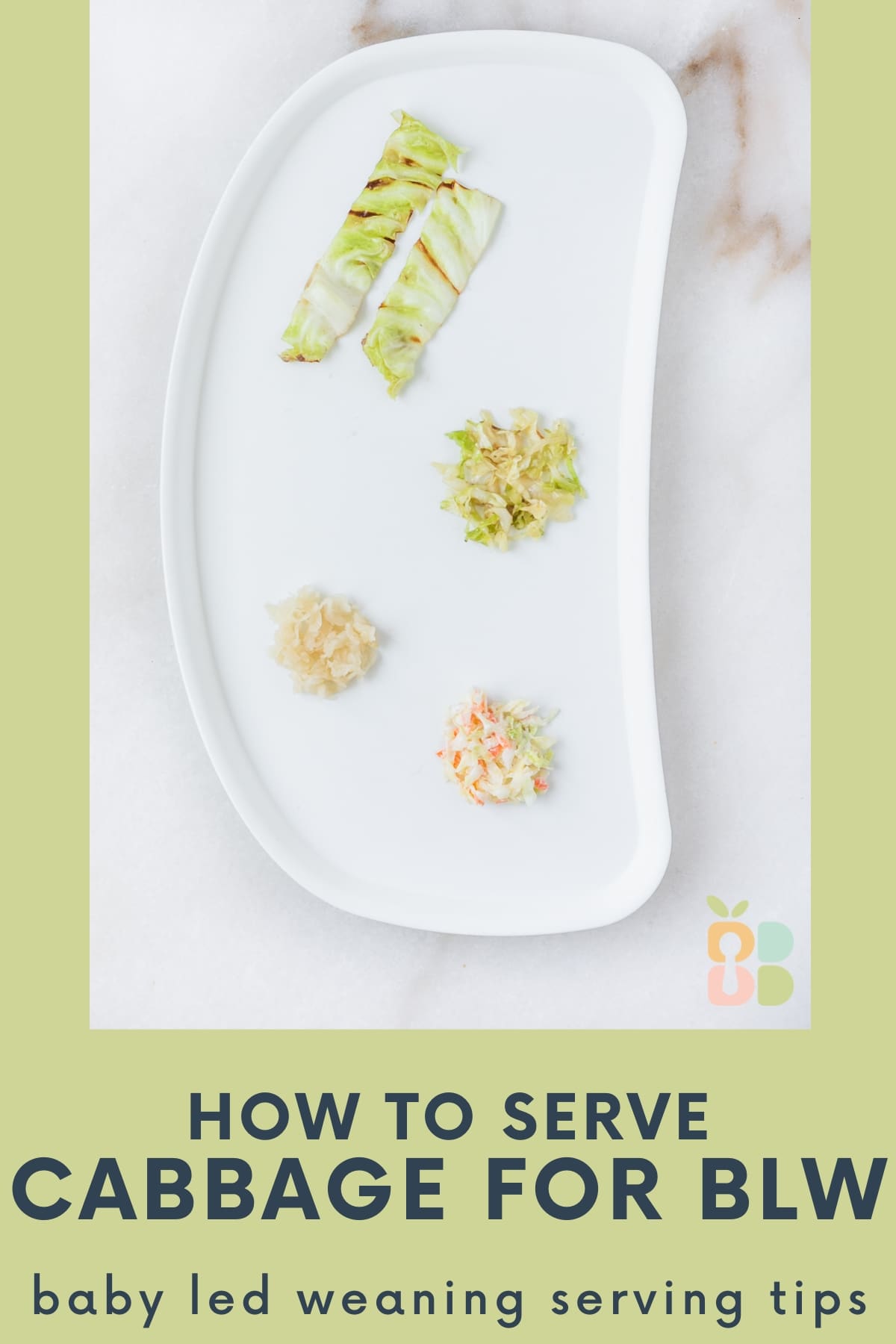
Cabbage can seem like an intimidating vegetable to offer to little ones just starting solids, kind of like celery or cucumbers, since it doesn't exactly get smushy when you cook it. But cabbage is affordable, and nutritious, and easy to cook, so don't leave it out of baby's diet just because it appears more challenging! Keep reading for everything you need to know about serving cabbage to baby led weaning babies, including how to cut, cook, and serve it to your little one starting solids.
Jump to:
Can Babies Have Cabbage?
Babies can have cabbage as soon as they are developmentally ready for solids, around 6 months of age. Introducing cruciferous vegetables with a bitter or sulfuric taste, like cabbage, in the early stages is preferable, since it can help your little one become used to these flavors and be more accepting of them later on.
If you're using a baby led weaning approach, you'll have to pay special attention to how you prepare and serve cabbage, since it is fibrous and can be very tough when not cooked. These tips apply to all kinds of cabbage, like red or green, crinkly savoy cabbage, and even napa cabbage or bok choy.
Baby Health Benefits
Cabbage is a good source of1:
- Vitamin K, which is essential for blood clotting and bones
- Vitamin C, which supports baby's immune system and helps increase iron absorption
- Folate, which supports baby's nervous system development
- Fiber, for a healthy gut and better digestion
- Antioxidants, including sulphur compounds and polyphenols, which can fight inflammation and reduce risk of chronic disease later in life. These are especially high in purple cabbage!
Vitamin C will be decreased with cooking, and in pre-shredded cabbage.
How To Cut Cabbage for Babies
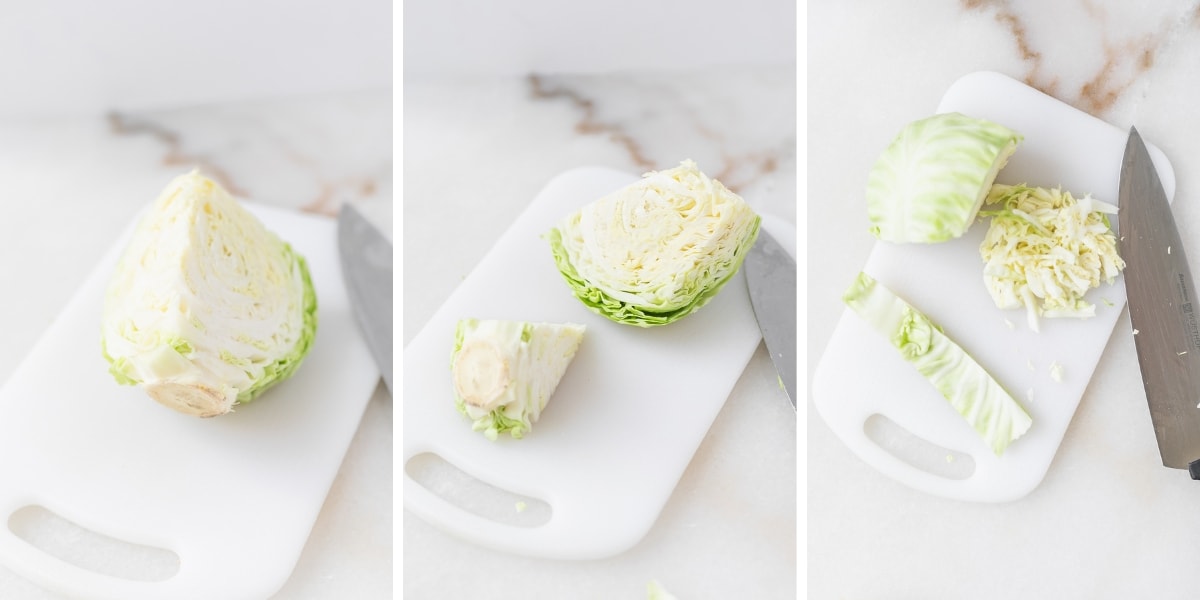
When cutting cabbage to prepare for baby, use a sharp knife to cut the head into quarters, slicing from top to bottom through the stem. Then use the knife to cut out the stem and core. From there, you can cut the quarters into wide strips or shred to the appropriate size.
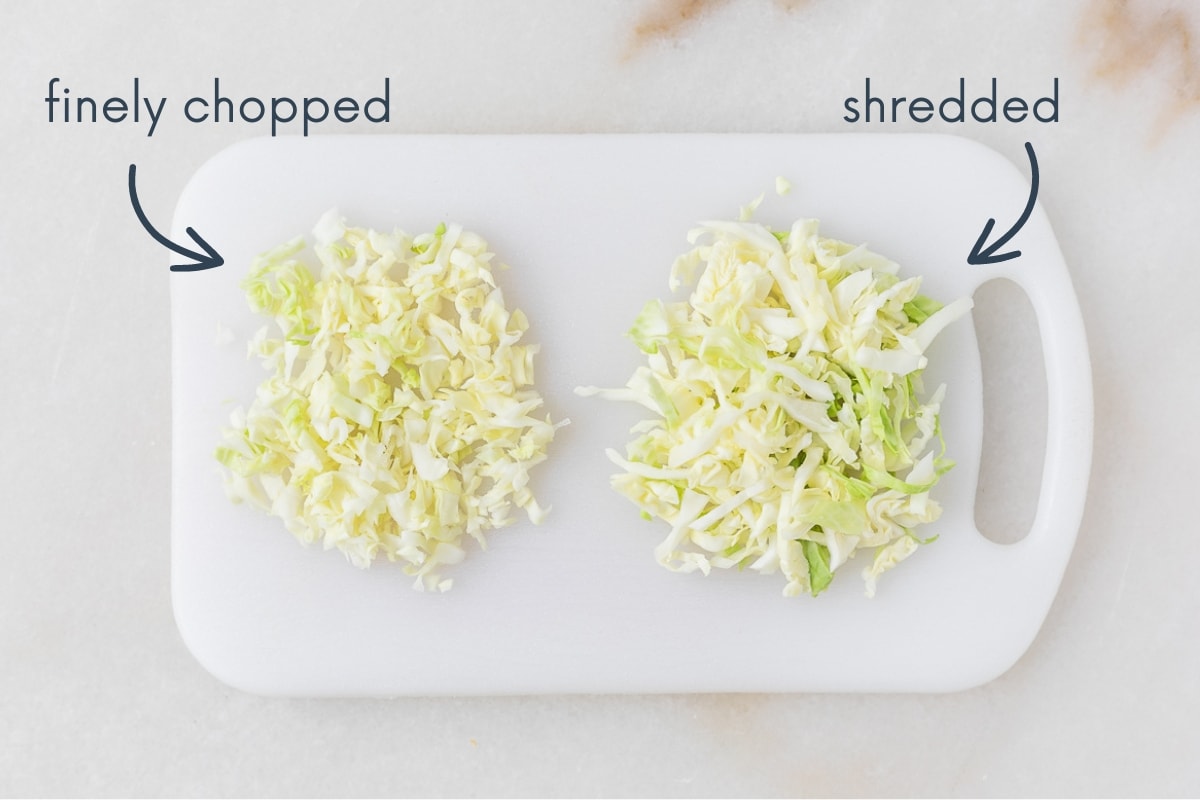
For coleslaw or raw shredded cabbage, you'll need to shred the pieces very finely than if you are going to cook it, since the cabbage will shrink down a little with cooking.
How To Serve Cabbage For Baby Led Weaning
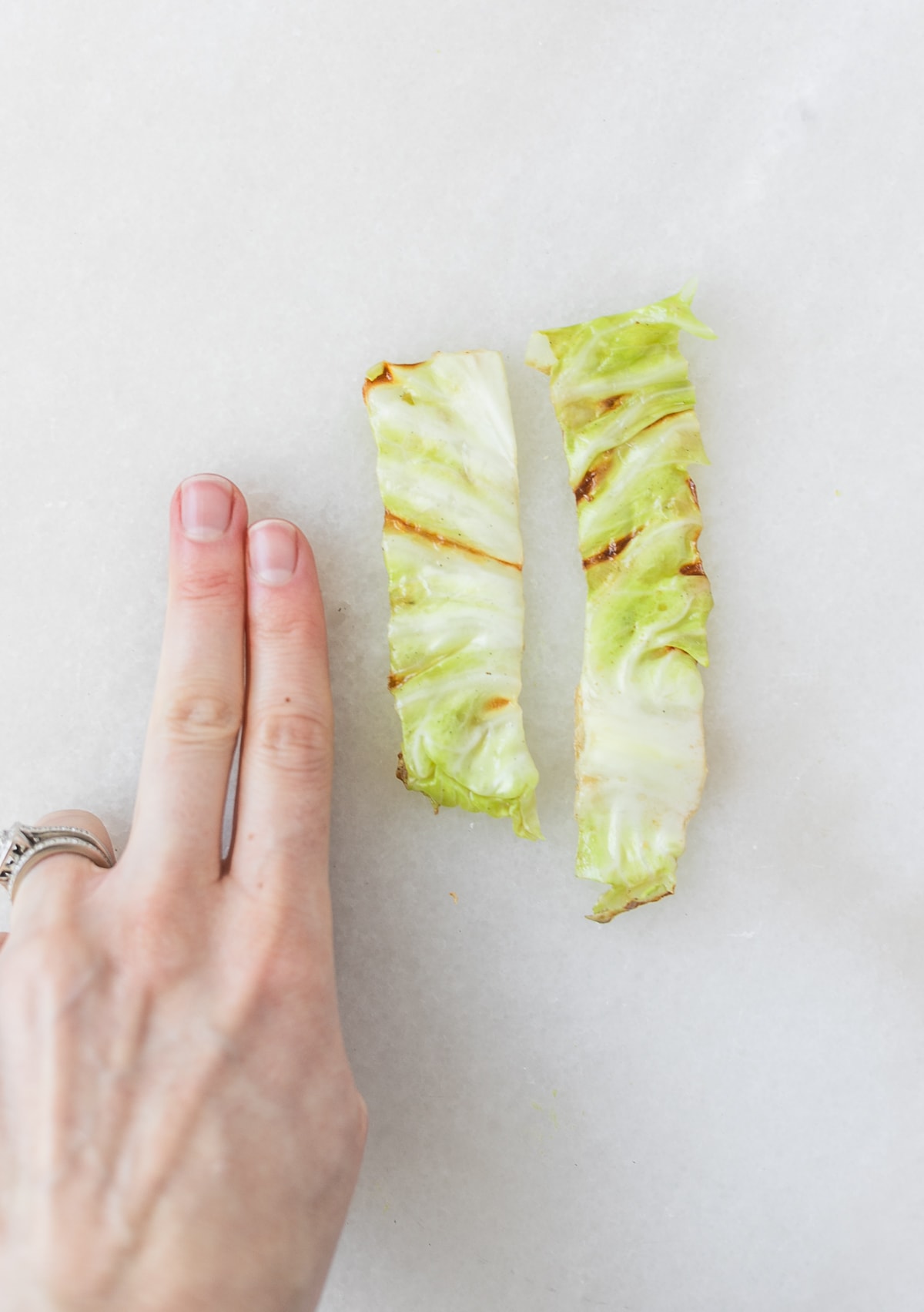
1. Two-Finger-Width Strips, Cooked (6+ months)
For younger babies just learning, bigger is better so that they can grab onto pieces with fists while placing some of it in their mouths. Cut strips about the length and width of two adult fingers. Baby won't actually be able to eat any of the cabbage, but it is good practice and flavor training. If baby does manage to break a piece off, calmly coach him to spit it out and remove it from the tray. Stop offering cabbage in big strips once baby gets teeth.
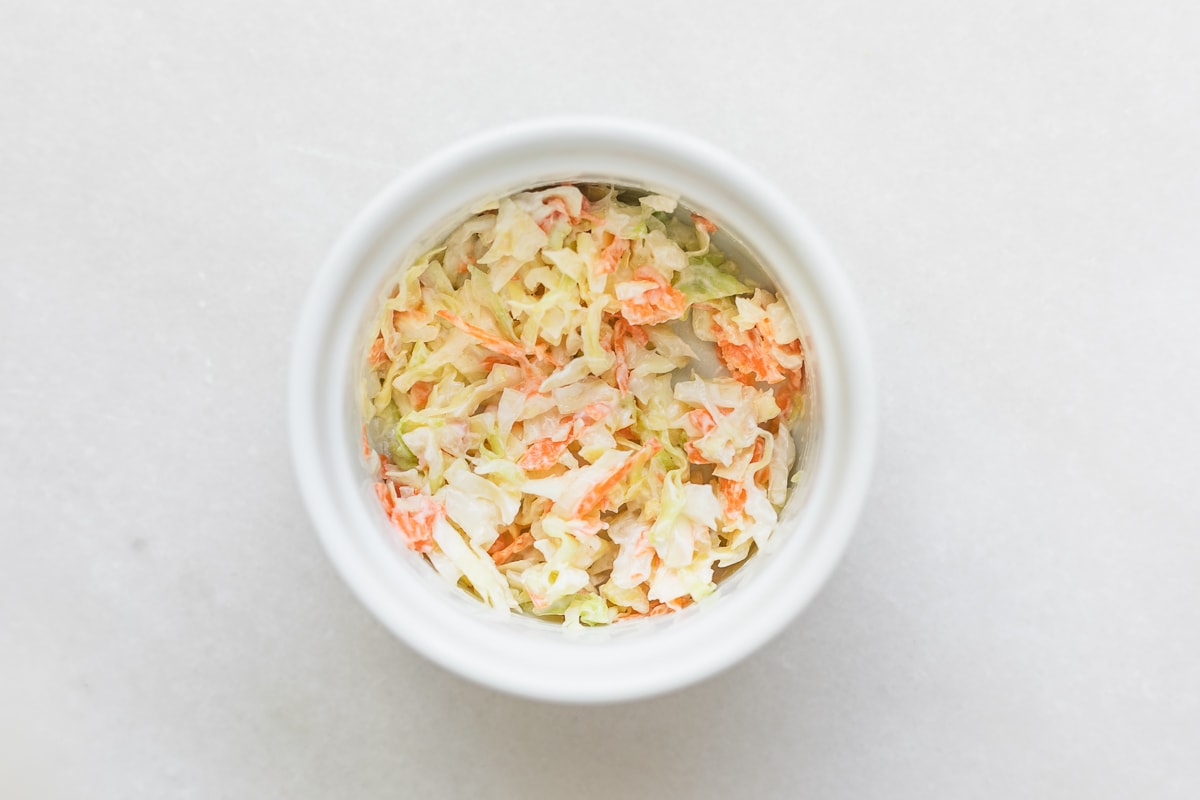
2. Finely Chopped, Cooked or Raw (6+ months)
You can finely chop cabbage finer than most bagged cabbage (a food processor with a shredding attachment may be helpful), and cook it according to your preference until softened (avoid making it crispy) and serve in a bowl or rimmed plate, allowing baby to scoop it with his hands or give on a pre-loaded spoon. You can also mix finely chopped cooked cabbage in with another scoopable food, such as mashed potatoes, or offer it finely chopped in mixed dishes.
If you prefer to offer raw cabbage, such as in coleslaw, you can offer it to baby in the same way. If you're making coleslaw, be sure to leave the sugar out of the dressing until after you have removed baby's portion! It may be harder for babies to pick up chopped cabbage before they develop a pincer grasp, but it will be good practice.
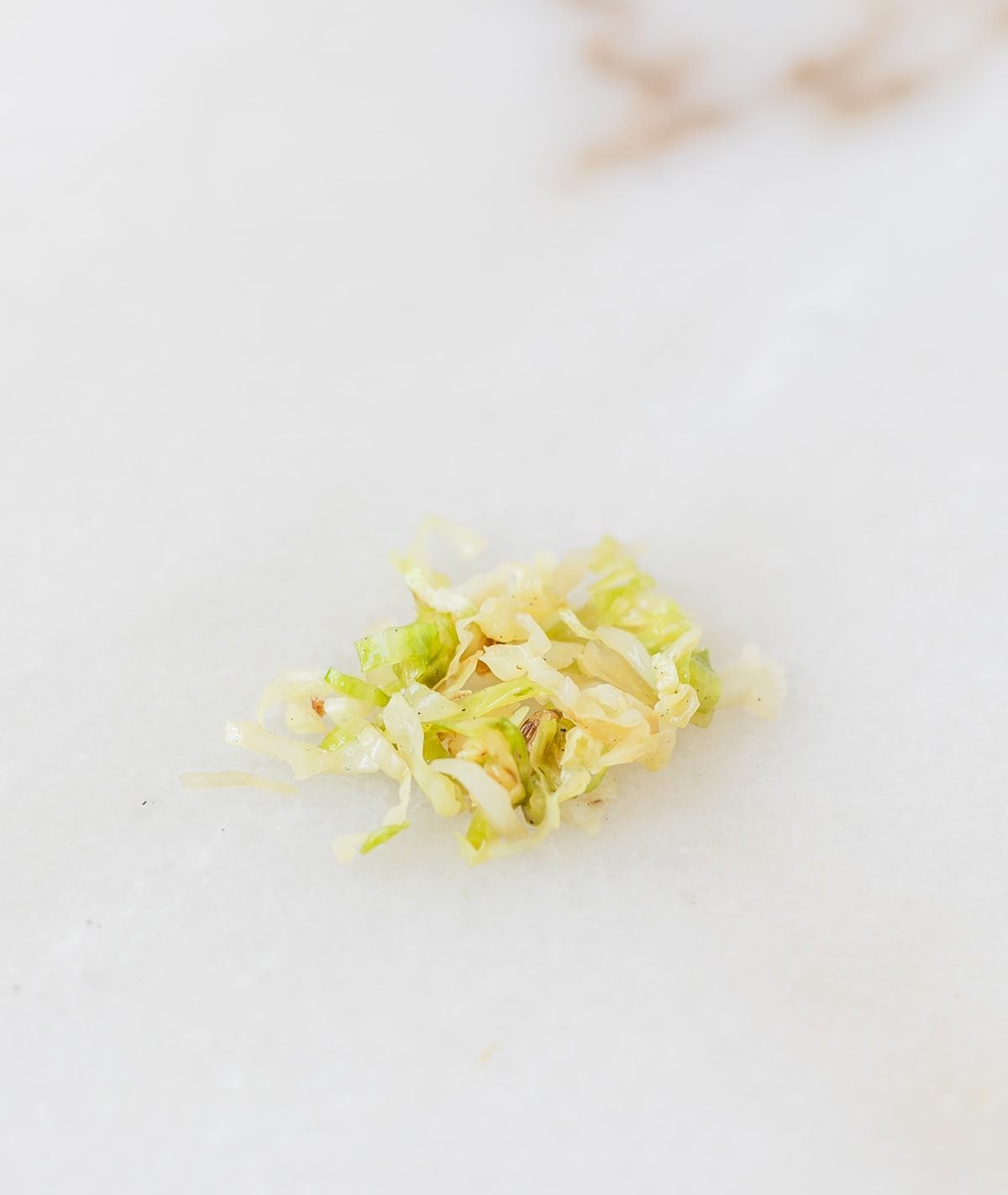
4. Shredded (9+ months)
Once baby develops a pincer grasp and better chewing control, he may be able to handle shredded cabbage, either raw or cooked. You can also offer it shredded in mixed dishes. Use your best judgement and supervise closely. At this stage, baby will probably spit out more cabbage than he swallows, and that's okay! It's still good practice. If you notice excessive gagging, simply coach baby to spit it out and try again later. By 12-18 months, baby should have more practice and be able to handle chewing and swallowing cabbage more effectively.
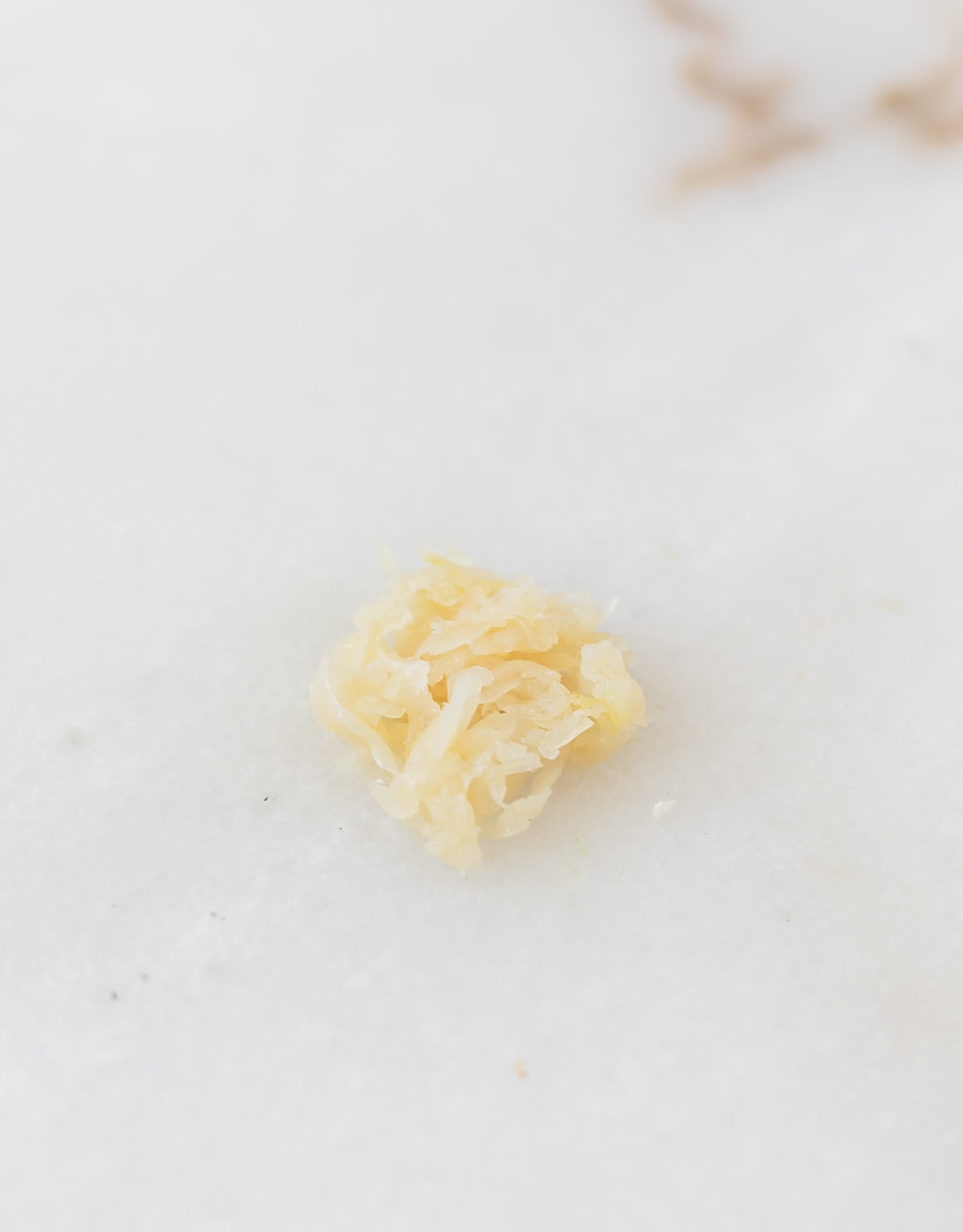
5. Sauerkraut or Kimchi (6+ months)
Sauerkraut and kimchi can be great flavors to expose your little one to! These fermented cabbage dishes also are both rich in probiotics that are good for baby's gut health. You can offer finely chopped fermented cabbage in small quantities (because it tends to have lots of salt!) starting at 6 months. Rinse it to remove excess spice or salt, and chop it more finely if the pieces are bigger than appropriate.
Best Ways to Cook Cabbage for Babies
Cook cabbage any way that you prefer it! Since cabbage is often an ingredient in mixed dishes, such as stir fry or soup, just follow the recipe (assuming it's appropriate for baby). If you are cooking just the cabbage, some good cooking methods include:
Steamed
Steam cabbage quarters or strips in a steamer basket placed over boiling water for about 20 minutes, or until soft, with the lid on. Once cooked, you can chop or shred the cabbage as needed.
Boiled or Braised
Shred cabbage and simmer in broth or water over low heat, as you would make soup, covered, for 30-40 minutes, or until soft. Season as desired.
Sautéd
Sauté finely chopped or shredded cabbage in a bit of olive oil or butter and any seasonings, such as minced garlic, in a skillet over medium heat until softened, about 101-5 minutes. If needed, you can add a splash of water or broth and cover the skillet to help the cabbage to soften.
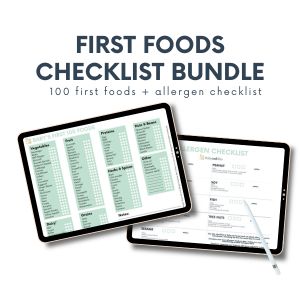
Track your baby's journey through starting solids! Get my 100 First Foods Checklist and Allergen Checklist Bundle today!
FAQ
Big pieces of raw cabbage can be a choking hazard. Be sure to remove the core and any thick pieces, and serve cabbage in an appropriate method. Shredded cabbage may cause gagging at first. Always supervise closely any time baby is eating!
No, cabbage allergies are rare. Individuals who are allergic or sensitive to other cruciferous vegetables or who have Oral Allergy Syndrome may also have a reaction to cabbage.
Cabbage and other high fiber vegetables can make babies gassy. Start with a small amount of these foods at first and try to observe which foods make baby uncomfortable. If baby is gassy but there is no sign of discomfort, no need to worry!
If you choose to offer raw cabbage to babies who are starting solids, be sure it is very finely chopped. Larger pieces of raw cabbage should not be introduced until your baby has more advanced eating skills (doesn't shovel food or overstuff his mouth, chews food well, has good tongue control), usually around 9-12 months.
Babies can have fermented cabbage such as sauerkraut and kimchi when they are developmentally ready for solids around 6 months. Refrigerated fermented products are a good source of probiotics, which are good for developing baby's gut microbiome. Since they are often high in salt (and some kinds are very spicy), rinse the cabbage first, and chop it to an appropriate size if needed.



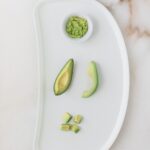







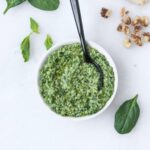

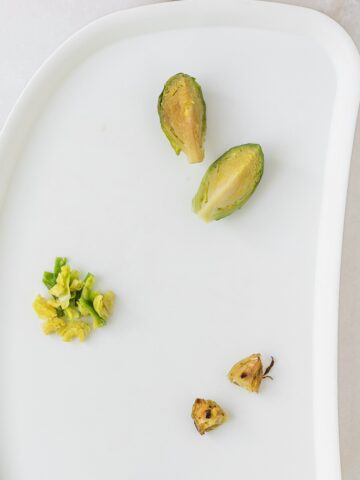
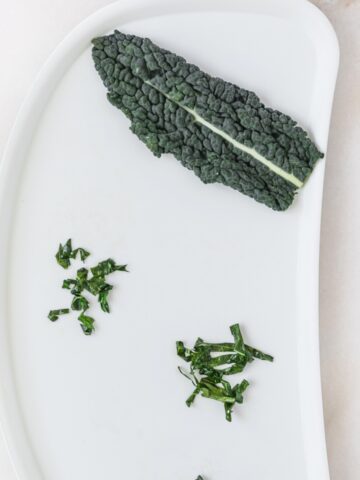
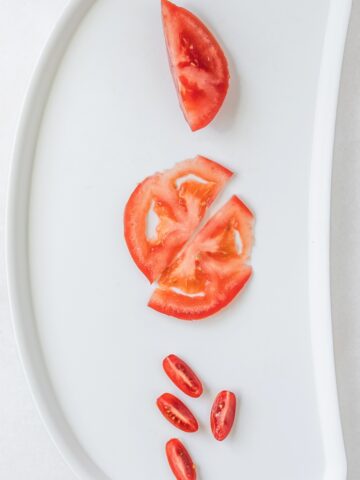
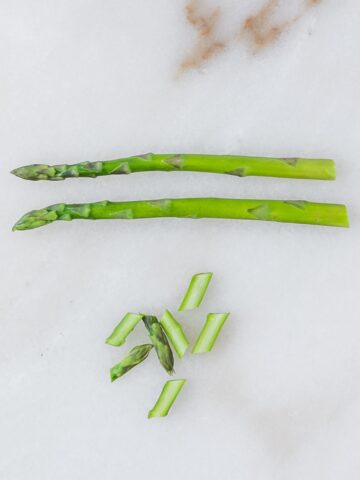
Leave a Reply